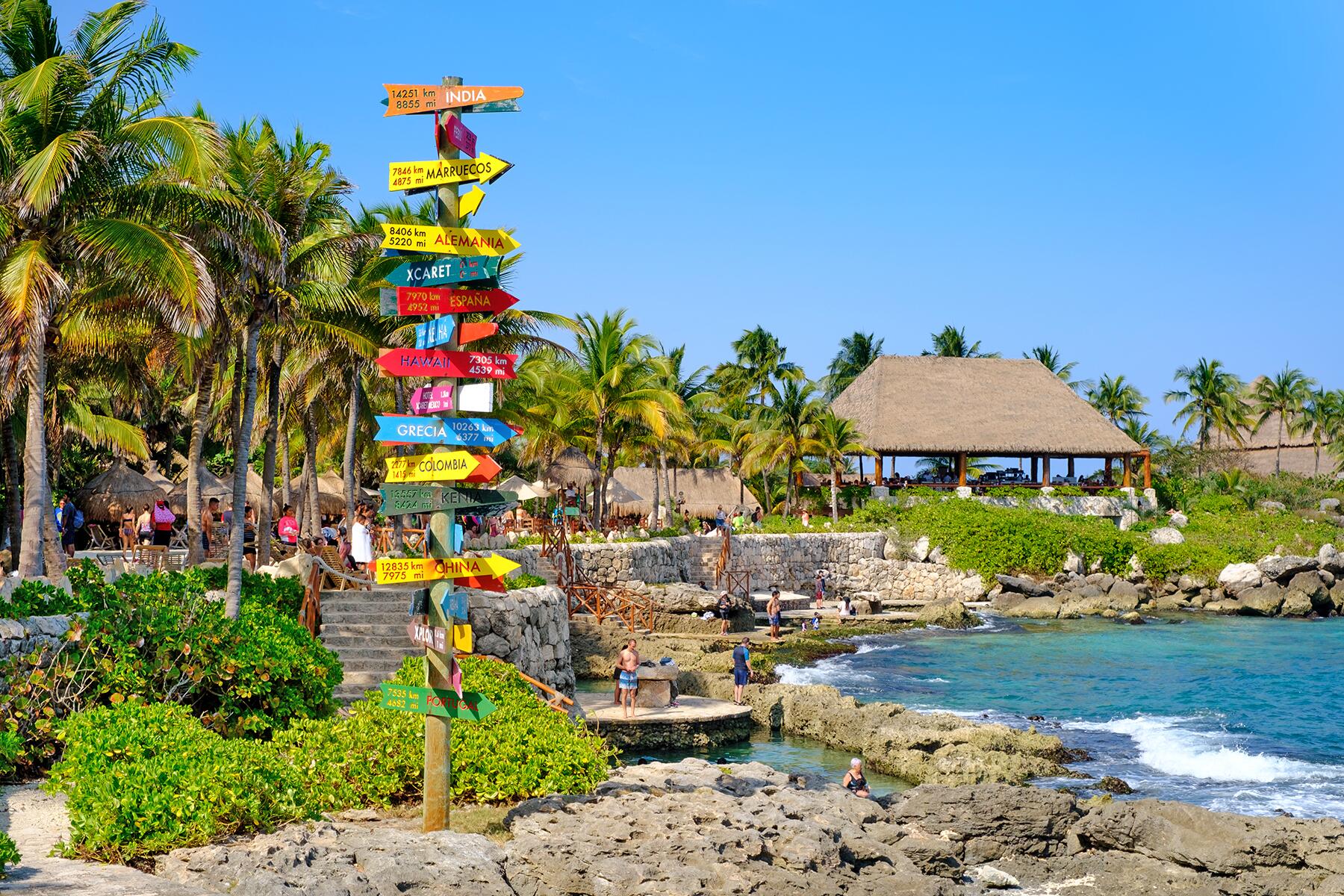In an effort to combat the effects of overtourism, Hawaii is pushing to implement a green fee for visitors keen to explore the island’s natural beauty.
Aerial drone footage shows a swarm of surfers paddling in all directions alongside breaking waves—but the surfers appear ominous rather than graceful, like insects infecting the rich green waters. An automated female voiceover narrates: “the tourism economy in Hawaii is hurting our home. It has been for a long time.” With over 1.1 million views, this TikTok posted on @HawaiiGreenFee advocates for tourists to pay a visitor green fee when staying on the islands.
It’s a timely message as less than 1% of Hawaii’s state budget is invested into its natural resources even though Hawaii’s oceans, coral reefs, beaches, and mountains contribute billions of dollars to the local communities, economy, and tourists, according to Green Passport: Innovative Financing Solutions for Conservation in Hawaii. The report details that the annual financing deficit amounts to more than $360 million per year. This shortfall has the potential to annihilate the future of the tourism industry in Hawaii, but luckily, there is a local movement for ethical tourism solutions.
@hawaiigreenfee Learn more on our IG. #malamaaina #hawaii #travelaloha #kanakasolutions #visithawaii #maui #oahu #kauai #kona #bigisland #hawaiian ♬ original sound – hawaiigreenfee
“The sentiment in Hawaii from our residents is that tourism is extractive on our resources,” says Carissa Cabrera, the Communications Lead for the Hawaii Green Fee Collective. “When the pandemic hit, it allowed Hawaii as a destination to reflect on an ideal tourism model. As a result, the Hawaii Tourism Authority is rolling out a regenerative tourism model with incentives and opportunities to give back to visitors during their stay.”
Recommended Fodor’s Video
While 10 million visitors a year enjoy the benefits of Hawaii’s ecosystems, Hawaii’s 1.4 million year-round residents bare the majority of the environmental costs.
An opposing view wants to end tourism altogether. “Stop coming to Hawaii. They are treating us like second-class citizens, literally cutting off our water to feed over-tourism,” tweeted Kaniela Ing, the National Campaign Director of Families For A Future, in a viral post. This is in response to a host of issues plaguing local communities due to tourism, including skyrocketing housing costs, increased traffic, rude and disrespectful tourists, stress on marine life, the destruction of coral reefs, and the strain on Hawaii’s rescue teams.

According to Green Passport, “data demonstrates growing concern that tourism’s positive contribution to the economy may not outweigh the impact that visitors have on the environment. While 10 million visitors a year enjoy the benefits of Hawaii’s ecosystems, Hawaii’s 1.4 million year-round residents bare the majority of the environmental costs.” However, stopping tourism is not viable as “tourism is the largest single source of private capital for Hawaii’s economy,” according to the Hawaii Tourism Authority, with visitors spending $12.08 billion in 2019.
Perhaps a visitor green fee is a solution, and there’s already a growing movement of visitor green fees worldwide. The gold standard model for visitor green fees is Palau—an island located in the western Pacific Ocean. Since 2018, the island instituted a Pristine Paradise Environmental Fee, which adds an additional $100 fee to international airline tickets. Additionally, visitors are required to sign a pledge honoring the culture and environment of Palau in order to qualify for a visa. Palau receives a fraction of Hawaii’s tourism numbers—with 89,726 visitors in 2019, which amounts to almost $9 million in fees. Similarly, Ecuador’s Galapagos Islands charge a $100 entrance fee, and New Zealand has a $23 conservation levy.
Locally, the push for a visitor green fee has been steadily mounting. Started over five years ago, the collective consists of a large coalition of local organizations known as hui, backed by representatives from organizations such as Conservation International, the Harold Harold Castle Foundation, and more. The focus is to pass a series of bills to implement a visitor green fee of $40 per visitor.

Creative solutions are needed as Cabrera explains that “conservation financing is extremely challenging—the limiting factor is always funding. Visitor green fees can bridge that gap; otherwise, we won’t have the capacity to handle these threats.” Cabrera shared that their public polling found that 88% of active Hawaii voters support a visitor green fee and many tourists are happy to pay a fee for sustainability. Additionally, the money could create thousands of local green jobs, including meaningful work restoring ecosystems, protecting animal and marine species, managing shorelines, coasts, and freshwater maintenance in forests and mountains.
However, it’s been an uphill battle to establish a visitor green fee on the books. The latest bill, SB3192, would have instituted a visitor green fee for tourists visiting state beaches, coastlines, parks, and trails but died because the Labor & Tourism Committee failed to schedule a hearing.
“The biggest question mark was “everyone supports this, everyone wants this, how can something everyone wants so badly fail to pass?” asks Cabrera. She added that the team isn’t giving up, and their latest Instagram post reads, “During the summer and fall, we will be organizing. We will be building a team. We will be identifying stakeholders, strategies, and creative ways to build support in other sectors. And we will be back.”
Editor’s Note: Per the Hawaii Tourism Board, Fodor’s recognizes “the proper use of the Hawaiian language, ‘Ōlelo Hawai‘i,’ which includes the ‘okina [‘], a consonant, and the kahakō [ō] or macron.” The Hawai‘i Board on Geographic Names was created to “assure uniformity and standardize spelling of geographic names to communicate unambiguously about places, reducing the potential for confusion.” In order to ensure our readers the best experience reading our Hawaii travel guides, we follow the standardized spelling, but hope to expose readers to the importance and cultural significance of the written Ōlelo Hawai‘i language.
I think a green fee is a great idea! We need to take care of our ecosystems and our planet! I don't think it would keep people from traveling there. If you can afford to go to Hawaii,an extra $40, 50 or even $100 would go a long way!
In your "Editor's Notes" on the Hawai'i pages, you mention that you recognize the proper use of the 'okina and kahako macron, but you don't use them in the articles citing that you are giving readers an unambiguous communication to reduce confusion. Maybe a better way is to always use them so that there is no confusion, and people become accustomed to the correct usage, and also to promote the proper pronunciation of the words.







The accommodation taxes tourists for their stays in Hawaii are still not enough...?!
I wonder how a separate and additional tax might improve the siruation of the Hawaiian environment? It really is up to the government to apply the tax and then divvy it to appropriate sector of economy including environment protection.
Also - consider that tourism feeds the economy of this state... so do not bite the hand that feeds you. On the other hamd - steep fines should follow any incidents of bad or destructive behaviour...